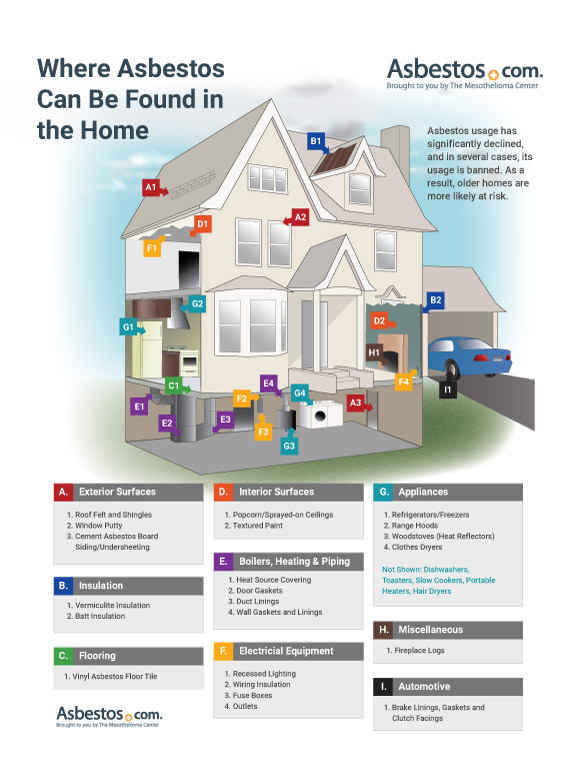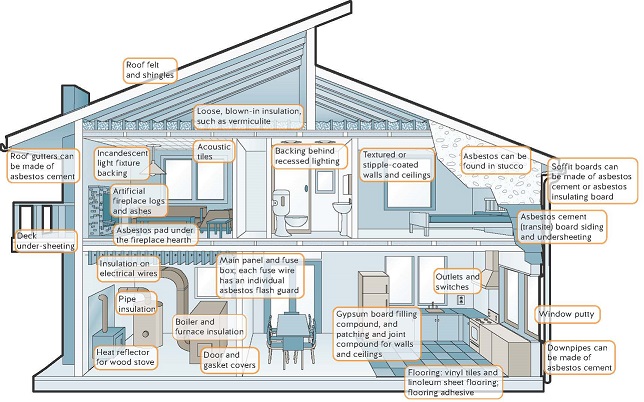Excitement About Asbestos Removal
Table of ContentsRumored Buzz on Asbestos RemovalThe Facts About Asbestos Removal RevealedGet This Report about Asbestos RemovalAsbestos Removal for Dummies
Ventilation requirements specified in paragraphs 1 and 2 of subsection 12( 3) assistance to make sure that workers in other parts of the work environment are not exposed to asbestos. In addition, the Policy likewise requires a polyethylene enclosure if the work area is not enclosed by walls and the operation is being carried on inside your home.

The workspace need to be separated from the remainder of the office by walls, barricades, fencing, or other ways that appropriate in the circumstances - Asbestos Removal. Indoor Type 3 operations mentioned in subsection 18( 4) require the use of a polyethylene or other appropriate enclosure unless walls confine the work location. Unfavorable atmospheric pressure need to be maintained inside the enclosure unless the building will be destroyed and will just be gone into by workers associated with the removal or by demolition employees.
Examination and upkeep of the negative air system, routine measurement of the negative air pressure, and routine assessments of the work area (particularly the enclosure, barriers and decontamination facility) are regulative requirements that assist to reduce airborne asbestos fibre concentrations inside the enclosure. All Type 3 operations require separation in between the work area and the rest of the workplace using walls, barricades, fencing or other suitable ways.
The Main Principles Of Asbestos Removal
When it comes to a multilevel workspace in an outside Type 3 operation described in paragraphs 1, 2, 3, and 4 of subsection 12( 4 ), such as an elimination on the side of a building that requires using scaffolding, the different work levels must be separated so that dust and waste will not fall easily from one level to another.
If the work is done outdoors or if it is carried out in a structure that will be destroyed and will only be gone into by the workers doing the asbestos removal or by employees associated with the demolition, then unfavorable atmospheric pressure does not need to be kept inside the enclosure.
The Policy also recommends health practices and procedures to secure employees, including washing or shower facilities, decontamination of personal protective clothes and equipment, the restriction of eating, drinking, chewing and smoking, and the rigorous separation of tidy and infected clothing and devices. try this website Facilities for washing the hands and face need to be offered employees and the workers need to utilize them when leaving the work location.
Facilities for washing the face and hands should be offered and every employee must utilize these facilities as they leave the work area. Workers who are carrying out Type 3 operations described in paragraphs 1, 2, 3, 4 and 6 anchor of subsection 12( 4) must travel through a decontamination facility as they leave the work area (Asbestos Removal).
8 Easy Facts About Asbestos Removal Described
If the work is done outdoors the decontamination center should be set up as close as practicable to the workspace. If the work is done indoors the decontamination center should be found so that the employees must go through it to get in and leave the work location. However, in some circumstances it may be needed for the employer to use the arrangements of section 23 to vary the techniques and treatments set out in the Regulation to establish a remote decontamination center.

It is also advised that non-powered respirators be thoroughly washed and, when it comes to a filter respirator, the filter cartridges taken in the shower and disposed of on the dirty side of the shower. The worker then exits the shower from the clean side, with the respirator, and puts on street clothes or a new set of coveralls that are stored in the clean room.
Facilities for cleaning the hands and face must be supplied and every worker should utilize these centers when leaving the workspace. The personal protective clothes and equipment needed by the Policy consists of respirators, to manage the direct exposure of employees in the work area, and protective clothing, to secure employees from secondary direct exposures and to avoid workers from carrying asbestos from the work location.
Indicators on Asbestos Removal You Should Know
To find out more on respirators see Chapter 12 (Asbestos Removal). Respirators approved by the National Institute for Occupational Security and Health (NIOSH) may be used in Type 1 operations if the worker requests them and are needed for Type 2 and Type 3 operations. Table 2 of the Policy (see Chapter 12) summarizes the respirator requirements for Type 1, Type 2, and Type 3 operations.
The requirements for his response protective clothing are set out in paragraph 12 of area 15 of the Guideline. It must: be made from product that does not retain or permit the penetration of asbestos fibres, include ideal shoes and a head covering, and include a complete body covering that fits snugly at the wrists, ankles and neck.
They can be easily torn, however, and must be fixed or changed when this occurs. The choice of suitable footwear is reliant on the type of work. High top rubber boots are perfect for damp elimination work, and are readily available as security footwear. Conventional security boots or safety shoes may be better for other kinds of work.